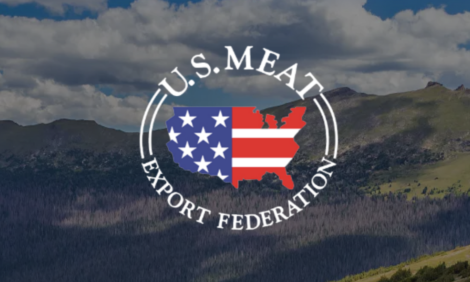



Liquid lunches - the key to a safe, healthy and profitable future
UK - With multiple benefits to pig health, performance, welfare, business profitability, food safety and the environment, it's difficult to understand why more pig producers are not plugged in to liquid feeding, writes Jane Jordan, PigSite Editor. |
|
Dr. Pinder Gill, says liquid feeding offers massive potential to increase productivity and efficiency.
|
Speaking at Paradigms in Pig Science conference, held recently at Nottingham University, Dr Pindar Gill, MLC Pig Technical Manager, attributed the UK's apathy in liquid feeding to economics rather than ignorance. The equipment and technology needed to run the system may involve investment, but the economic and production advantages really cannot be ignored.
Dr Gill said that producers were beginning to consider investment, but confidence was still an issue and was holding the industry back. "Wet feeding is not an ad hoc decision. It's not a business solution to a performance problem. Rather a planned investment opportunity and currently a very valid option for UK producers," he added.
Trails at MLC's Pig Development Unit, Stotfold, covering a three year period, showed that growth rate and production costs were more favourable on wet-fed finishing systems. The studies monitored straw-based and slatted finishing systems and in all cases performance was better. Average daily liveweight achieved 796g per day, more than five per cent higher, than for pigs given dry pellets. FCR averaged 2.27 - a 10 per cent improvement - and cost per kg gain was lower at under 94p per kg. This was further reduced to 85p per kg when a co-product was introduced to the ration (in this case vegetable waste).
By comparison, the cost for dry fed pigs was 97pkg at best. "Liquid feeding represented significant savings without any compromise to carcase composition or meat quality," said Dr Gill.
There were health benefits too. Many studies confirm that weaned pigs 'do better' on liquid diets and veterinary investigations showed that the gut morphology and integrity of wet-fed weaners was superior to those fed dry diets. "Liquid diets do appear to reduce the physiological changes that can occur at this stage in a pig's life," explained Dr Gill.
Villi development and structure are better maintained, which has implications for long-term digestive efficiency and enteric health. And this may be partly responsible for the better FCR consistently observed in liquid fed pigs.
Health, hygiene and welfare
However, Dr Gill said wet feeding young newly weaned pigs, presented many challenges. "Hygiene and fermentation are important considerations. Get them wrong and feed refusal becomes a serious issue," he said. Palatability was the key here, because maintaining and/or encouraging intake at this stage could limit post weaning check, sustain growth and in many cases maintain health status."Feed has to be fresh, not fermented with well designed troughs and delivery - and this can be a difficult to get right," he said.
By contrast fermentation was a key advantage in the growing and finishing phase. Fermented feed can reduce enteric disease/disorders, control salmonella levels and improve welfare.
In most cases, pigs fed wet diets have fewer digestive upsets than those fed dry diets. Fewer microbial organisms are shed in the faeces. Samples taken from slaughter pigs at slaughter also confirm higher lactic acid to coliform ratios in liquid fed animals, indicating that overall gut health is better.
In the three years that MLC carried out trails with liquid feeding, Dr Gill said that the fermented diets produced achieved consistent levels of lactic acid. Diets measured pH 4.85 to 4.9 had a direct effect on the salmonella levels found in finished pigs.
ELISA tests were 50 per cent lower for liquid fed pigs than those given a dry pelleted diet. Caecal carriage of infection followed the same trend. Financially, the wet fed pigs, on both straw-based and slatted systems, out-performed their dry counterparts.
"There are significant implications for food safety, salmonella control and production efficiency here, and there are welfare implications too," said Dr Gill.
Recently published data (Scott et al 2007) has shown that gastro-ulceration is more severe in pigs fed a dry diet - particularly those reared on slats. Liquid fed pigs had significantly lower scores, with 80 per cent of those observed from straw-based systems showing zero or marginal lesions.
Dr Gill said that ulceration would have a detrimental effect on overall feed intake and performance, but there were also welfare considerations, because pigs were likely to experience some degree of discomfort.
Behaviour and environmental benefits
Another observation made during MLC's three-year trial period was the effect fermented feed had on pig behaviour. Apart from generating natural acids, fermentation produces ethanol (alcohol) which can induce lethargy. "We certainly found that pigs' tended to sleep after feeding; there was less activity and therefore less aggression seen in the wet fed pens," said Dr Gill.Nutrient uptake is also better with liquid feeding. Model estimates, based on the performance benefits achieved from wet diets, suggest that nitrogen retention is three per cent higher. With dry rations nutrient absorption improves as particle size is reduced. However, with wet feed particle size is irrelevant.
"Why mill fine grade cereals when you don't need to; so you can save energy here too," said Dr Gill.
MLC research has shown that adding co-products to cereal-based liquid diets improves the suspension, making it easier to mix and deliver. "It produces a more homogenous mix that flows better. There is energy saving implications here too," explained Dr Gill.
There is also evidence to suggest that adding co-products (in this case distillers soluables) rapidly increases the release endogenous phytase or 'soluable P' from wheat based diets, so reducing the amount of phosphorus excreted by the pig.
For more comment from the conference click here








